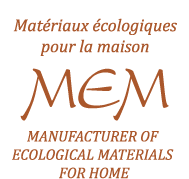ACV is the measure of the necessary resources to make a product and the quantification of the impacts on the environment for its manufacturing. It expresses itself according to 8 criteria which quantify the impacts of the product or the system on the environment (depletion of resources, atmospheric acidification, greenhouse effect at 100 years, destruction of the ozone layer, the formation of photochemical ozone, non-renewable energy consumption, production of waste, air and water pollution. The life cycle of a product, process or service include the phases of manufacturing, transformation, use and destruction. This method rests on an approach with 4 phases: the definition of the objectives and the field of study, the analysis of the inventory, the evaluation of the impact, the interpretation of the results obtained according to the initial objectives.
It represents the capacity of covering to absorb the energy of a sound wave. This figure varies from 0 to 1. The closer it is to 1, the more is absorbent is the material . The effect of echo in a room results from the reverberation of sounds on walls.
Paint with lime diluted in water is used for covering walls inside and outside.
The average thermal conductivity is the quantity of heat W/m. K being able to be transferred in a material at given time. More the value? The material, in equal thickness is small, more, is insulating. Insulations have? 0,06 W / mK.
The Sum of energy (measured in kWh) necessary for the production (including harvest, transformation(processing), conditioning(packaging) and transport) for a given quantity of a material.
The factor µ of a construction material is a parameter without dimension indicating how many times the material of construction is more resistant to vapor than a coat of air of the same thickness and in the state of rest. The µ factors of most common building materials are indicated in the DIN 4108-4. The higher the factor µ is the more the material of construction is resistant to vapor!
All the processes implemented in a building to reduce the exchanges of heat with the outside.
In a given temperature, the air can only store a certain quantity of humidity. The air saturated by steam has a relative air humidity of 100 %. The absolute of assimilable maximal humidity depends largely on the air temperature – the hot air can absorb more humidity than the cold air. When the air cools, the relative humidity increases (the contained absolute humidity remains constant). When comes a time when the relative humidity reaches 100 %, we reach the dew point . We can observe this phenomenon frequently, when for example the hot ambient air cools in a window and when there is condensation on the surface of the window. Which can cause problems withing buildings and greater energy consumption.
